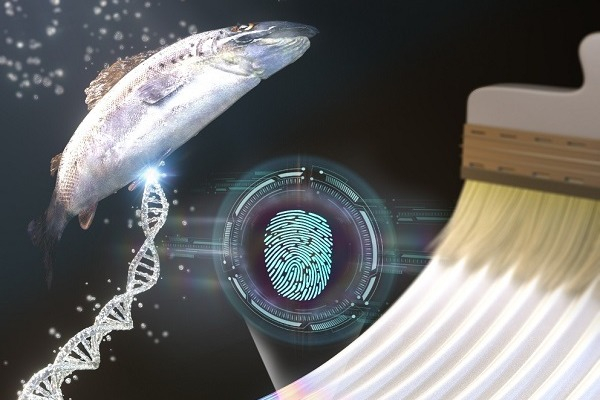Chemical Industry
S.Korea's top tech school uses salmon DNA to block art counterfeiting
The Korea Advanced Institute of Science and Technology has developed physical unclonable function technology
By May 24, 2023 (Gmt+09:00)
1
Min read
Most Read
Hankook Tire buys $1 bn Hanon Systems stake from Hahn & Co.


NPS to hike risky asset purchases under simplified allocation system


Osstem to buy BrazilŌĆÖs No. 3 dental implant maker Implacil


S.Korea's LS Materials set to boost earnings ahead of IPO process


UAE to invest up to $1 bn in S.Korean ventures



PUF uses a one-way function without an inverse function to create a security pattern that cannot be duplicated or forged. Also useful in preventing counterfeiting of artworks, the technology is being developed in a range of forms.
Irregularities in fingerprints and zebra patterns are types of natural PUFs.
The Korea Advanced Institute of Science and Technology (KAIST) on Tuesday said its chemistry professor Yoon Dong-ki and Ph.D. student and researcher Park Geon-hyeong developed PUF source technology usable on artworks using salmon DNA.
The research team said "buckling instability" occurs when DNA extracted from salmon is dissolved in water and applied with a brush, resulting in numerous random patterns such as those of zebra stripes. Such instability refers to a phenomenon in which a thin structure is suddenly deformed or destroyed by a force.
In the random patterns appearing when buckling instability occurs, the fingerprint traits ridge ends and bifurcation points occur. The team confirmed these patterns through a polarized optical microscope and defined it by converting the digital bit to zero or one to produce "digital security ink."
Researchers then swept the substrate with a brush that evenly applied this ink, with the volume of bits reaching 150 squares of 10 in a space measuring about 100 micrometers in width and length on the substrate.
"This study produced a security pattern that acts like a fingerprint by utilizing the randomness that appears in the self-assembly of soft materials," a team source said. "This finding is expected to be the cornerstone of the development of security technology impervious to quantum computers."
The results of this study, which is supported by the National Research Foundation of Korea under the Ministry of Science and ICT, were published in the international scientific journal Advanced Materials.
Write to Hae-Sung Lee at ihs@hankyung.com
More to Read
-
 Aerospace & DefenseS.Korean Army opens Future & Innovation Research Center at KAIST
Aerospace & DefenseS.Korean Army opens Future & Innovation Research Center at KAISTMay 22, 2023 (Gmt+09:00)
1 Min read -
 ESGKakao Impact, KAIST team up for social change through technology
ESGKakao Impact, KAIST team up for social change through technologyFeb 28, 2023 (Gmt+09:00)
1 Min read -
 Future mobilityKAIST, Hyundai sign agreement for high-speed self-driving research
Future mobilityKAIST, Hyundai sign agreement for high-speed self-driving researchFeb 23, 2023 (Gmt+09:00)
1 Min read -
 RoboticsSamsung Electronics, KAIST join forces to train robotics experts
RoboticsSamsung Electronics, KAIST join forces to train robotics expertsFeb 14, 2023 (Gmt+09:00)
1 Min read -
 Research & DevelopmentKAIST invents world's 1st rubber-like printed circuit board
Research & DevelopmentKAIST invents world's 1st rubber-like printed circuit boardNov 15, 2022 (Gmt+09:00)
1 Min read -
 Tech, Media & TelecomHansol Group, KAIST to launch new tech, AI research center
Tech, Media & TelecomHansol Group, KAIST to launch new tech, AI research centerOct 13, 2022 (Gmt+09:00)
1 Min read
Comment 0
LOG IN


